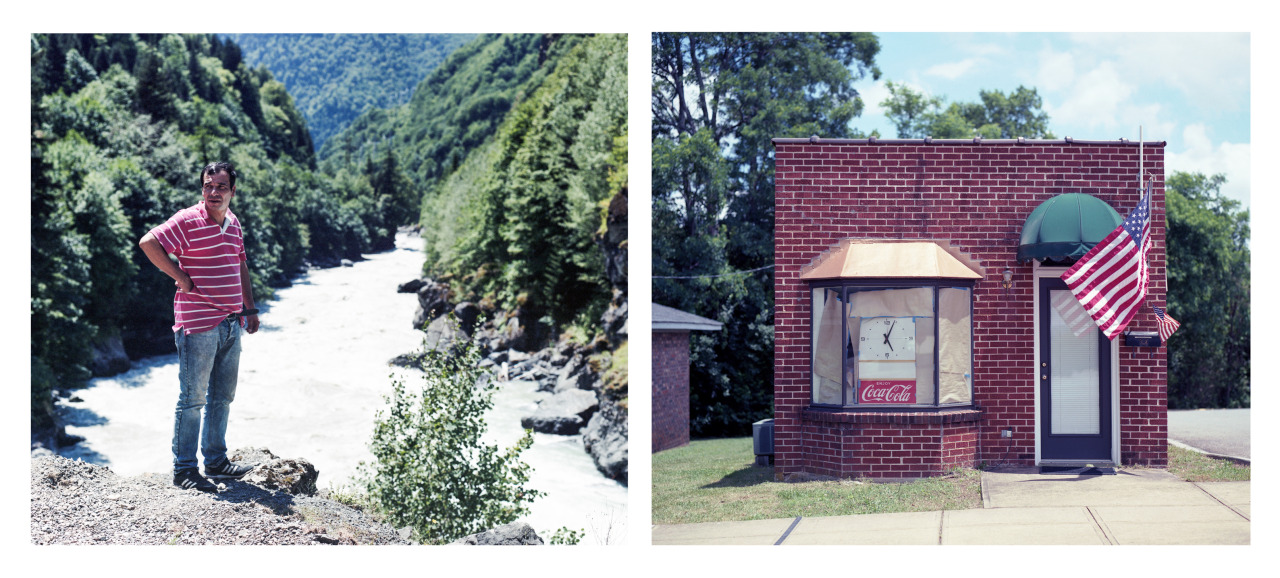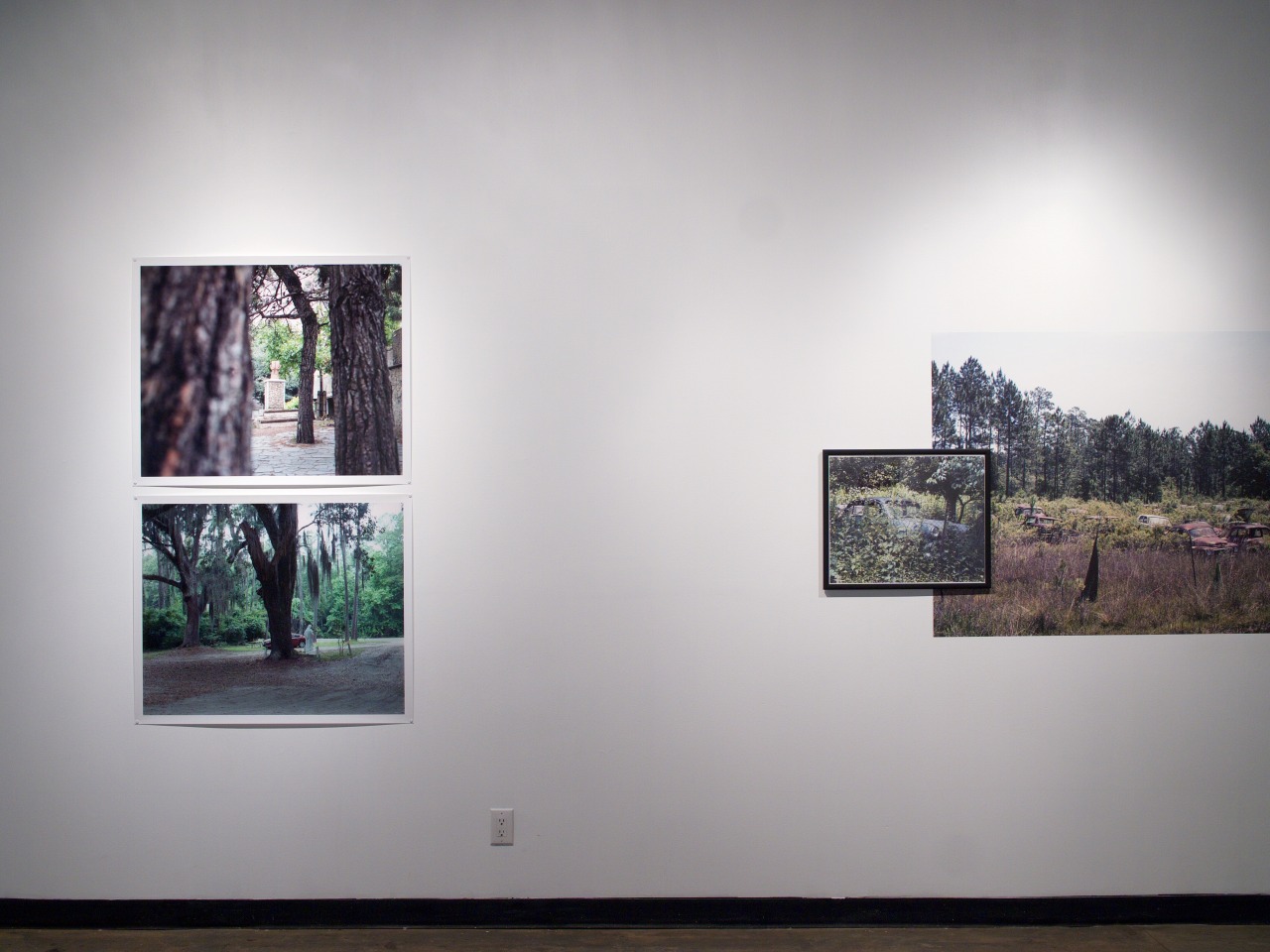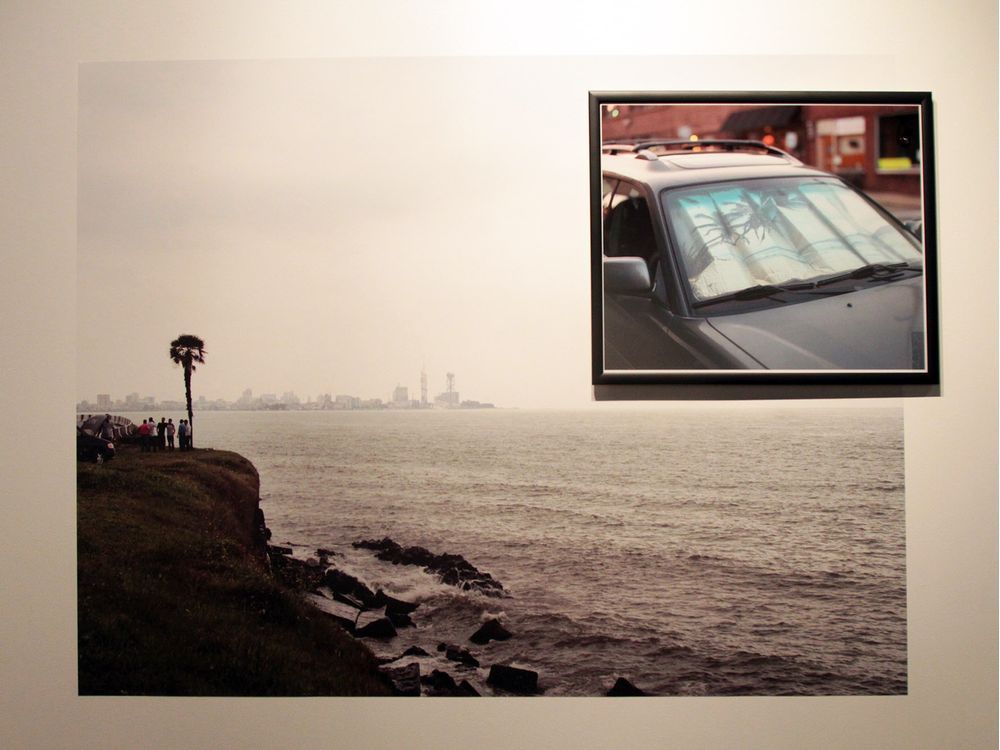Kyler Zeleny & Yanina Shevchenko | Georgia Georgia
May 13–June 18, 2016
Opening reception: Friday, May 13 at 7 pm
Walking Photography Workshop | Saturday, May 14 at 1:30 pm
Kyler Zeleny and Yanina Shevchenko’s playful transatlantic project is a photographic typology that begins with simple word-play. They developed an interactive process—Shevchenko’s photographs of people, landscape, and the built environment in former Soviet Georgia provided raw materials for Zeleny to discover echoes in the American state. Discovering ‘poetic connections’ between the places in photographs, the duo’s individual styles began to quote one another as they created a single narrative of a fictional place equally made from each Georgia. Georgia Georgia resists easy clichés of the rural, but delves into local stories of place and post-globalization identity in visual rhymes. In these images, the two artists inhabit one another’s techniques and ideas, finding connections somewhere between “same” and “other” among their works. Their images are presented as a set of diptychs of unexpected similarities.
Two photographs
by Kristen Hutchinson
In our current moment of digital and smart phone photographs, memes, selfies, and fake viral images, we might think that the perception of the photograph as a truthful document has been lost. While we have certainly become more sceptical about the inherent veracity of the photographic images we consume, photography continues to be an effective tool to make sense of the world and to challenge our assumptions. In their collaborative project Georgia Georgia, Canadian photographer and researcher Kyler Zeleny, and Russian photographer Yanina Shevchenko present us with images that playfully question what photographs can tell us about cultural and geographical differences and similarities in an age of extreme globalization.
Presented as a series of diptychs, my initial response was to spot the similarities and differences between the images. The photographs themselves encourage this type of game playing encounter. In an aesthetically compelling diptych, a group of people gathered beside a single palm tree at the water’s edge is contrasted with a photograph of a cooling screen on the front window of a car with an image of palm trees and beach. The peeling of the car screen parallels the city in the far distance of the other photograph, calling to mind the environmental consequences of commodifying nature. In another pairing, a large sunburned man stares off into the distance as if watching his doppelganger ride a bike along the seashore in the photograph opposite. Here, the gaze of the first man bridges the gap between the two photographic and the geographical spaces. The pairing of Shevchenko's photographs, taken in the Eastern European country of Georgia, with Zeleny's images, shot in the state of Georgia in the US, made me wonder where each individual photograph was taken. The combination of images often makes it difficult to determine their provenance, and this is one of the compelling aspects of the series. Georgia Georgia also led me to think about how I was imposing my own assumptions about American and Eastern European cultures onto the photographs. In one diptych we see a man leaning against a wooden cane on a street corner paired with what appears to be a farmer clutching a similar cane, herding cattle in a barren landscape. My initial guess was that the man on the street corner is American while the other is Georgian. However, this is not necessarily the case, and then I began to ponder why I drew that conclusion.
We often construct and maintain our memories through photography since it is a medium that can remind us of where we have been and how much we have changed over time. This series of photographs creates potential connections between geographical location and identity. How do where we were born and where we now live affect who we are?
The juxtaposition of similar objects, landscapes, people, and patterns in each diptych also draws attention to the process of making the series. My first assumption was that Zeleny and Shevchenko took their photographs independently of each other, and the similarities were then constructed through editing and choosing images with shared subject matter and aesthetics. In fact, I was mistaken. Shevchenko first took photographs of people, landscapes, and human built environments in the country of Georgia, and then Zelenky used those images as inspiration for his own photographs of the state of Georgia. By documenting two very different locations that just happen to share a name, the process of creating Georgia Georgia is both constructed and reliant upon happenstance. The series thus engages with the conventions of street and conceptual photography and the particularities of the medium itself.
-
Kristen Hutchinson is an art historian, artist, curator, writer, and art consultant. She is currently writing a book about supernatural creatures in contemporary art television and film. She also teaches independent seminars about art, film, and television online and in her living room in Edmonton.




